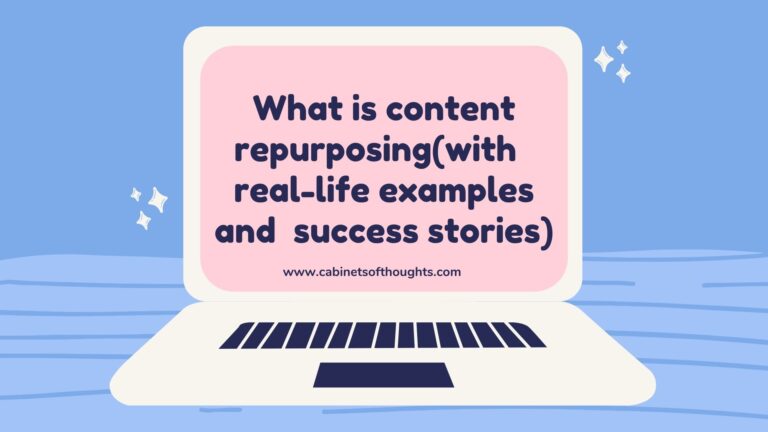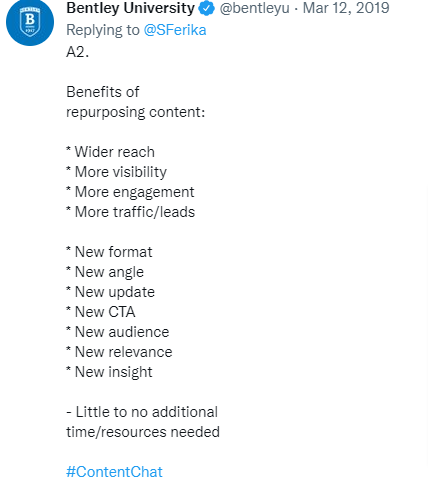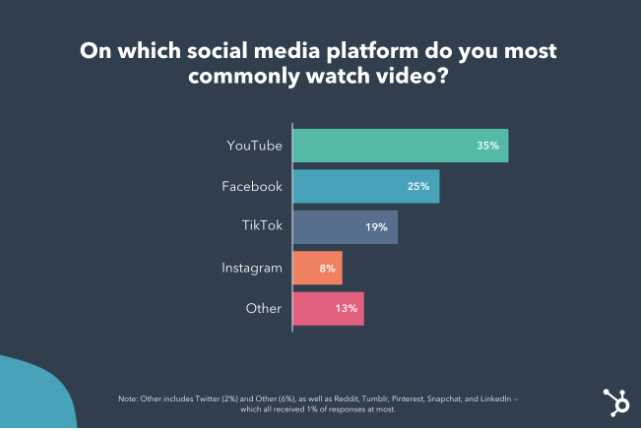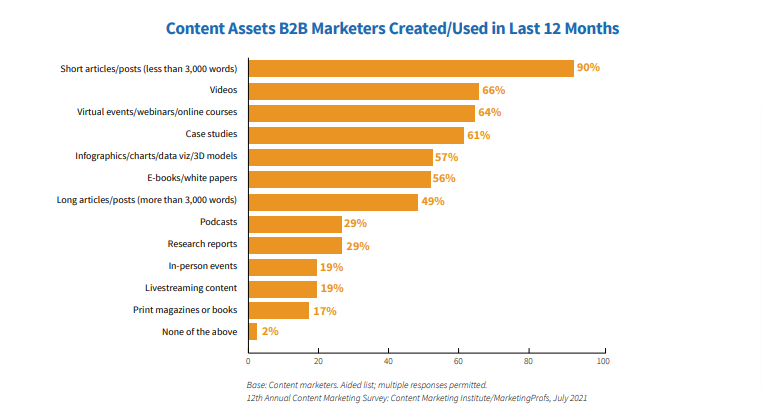
Content repurposing is the second most popular marketing strategy after SEO. Its demands have also increased from 51% to 61%, according to the Semrush report.
Are these stats hitting you hard? Because you don’t know about content repurposing. And want to make it part of your marketing strategy.
Worry not; you are at the right place to learn about content repurposing.
We will dive into all essentials of content repurposing. In this article, experts share benefits, ways, examples, and success stories of content repurposing.
Let us dive into it.
Table of Contents
What is content repurposing?
Content repurposing means repackaging your content.
Repurposing is taking your existing content and turning it into something new.
It is reusing your content in different formats for different platforms.
For example:
- Changing your youtube video to an Instagram reel.
- Turning podcast into a blog.
In content repurposing, you change the appearance of your content without changing the main idea.
It is like old wine in a new bottle.
Do not confuse repurposing and resharing. They are different terms.
In resharing, you share the original content on another platform. But in repurposing, you transform it according to platform demands.
What are the benefits of content repurposing?
1—New Audience
Content repurposing expands your audience pool. Repurposing content for new platforms brings a new audience.
As some of your audience loves videos, other loves audio or written content. And now you are feeding them according to their taste.
Kimeley of Kabo shares her views to get a new audience from content purposing:
“Content repurposing helps you reach new audiences! Content posted a year or a few months ago might not reach the same people if you publish it now. With Google’s forever-changing algorithm, building new content on top of old will help build and refine your audience over time.”
2—Save time
The main benefit of content recycling is saving time.
Starting to create content from scratch takes a lot of time. It is better to take existing content and mold it into another form.
Nina of zety supports content repurposing to save time.
“Content repurposing helps you save time and money by reusing existing resources in new ways. It maximally shortens the process of bringing new content to life.
After all, you already have a ready and tested idea, extensive research has been done, and the effects of publication have already been analyzed.”
3-Rescue in the creative crisis period
There are times when the content team struggles to come up with ideas. It disturbs the whole publishing cycle. But here is content repurposing saving you from the creative crisis.
LiveCareer’s Agata says,
“It is also a great way to deal with a creative crisis. No new ideas?” No problems. Get inspired by yourself.
Thanks to content reusing, brilliant ideas are like cats. They have nine lives. Or even more.”
Bentley University had summed up content repurposing benefits impressively in Twitter #ContentChat.
How do you find the content pieces that need to be recycled?
Here are our tips on how to get started and find pieces for content repurposing:
Prework before deciding on content pieces
First, define your goals.
These goals can be:
- Expanding your brand message
- Targeting new audience
- Boosting your SEO
After defining your goals, select platforms for content repurposing.
Research these platforms’ audience, content form, style, and language.
Decide content pieces to repurpose
Now it’s time to find content that matches your goal.
These are the 2 best content pieces for repurposing
- Evergreen content
- Viral content
1:Evergreen content
Your first preference for repurposing content should be evergreen content.
Evergreen content is:
- High quality
- Relevant
- Timeless
How do you find evergreen content?
It is not seasonal and news-based content.
This is the best content to reuse as it will be valid for years and gets constant traffic.
2:Viral content
Viral content deserves to be repurposed.
Because viral content is
- Most shared on social
- Have high traffic
- Gets comments
You can verify viral content with Google Analytics and BuzzSumo.
Go to your Google Analytics and check its traffic.
Use BuzzSumo to find the social share of this content piece.
Erin of Be Aligned Web Design has also approved using viral content for repurposing.
“When you create something that goes viral, it’s your sign that you should take advantage of the topic and try to reach more people.”
12 Ways to repurpose content with examples
Take a look at our experts’ favorite ways to repurpose content. We are also sharing examples of their repurposed content.
This will help you to make the most of your content.
1- Repurposing the webinar
More than half of marketers surveyed by CMI said virtual events like webinars were their best-performing content in 2021. Therefore, this goldmine resource deserves repurposing.
It takes a lot of effort to conduct a webinar. And it’s a mistake to end its lifespan after its live streaming?
You should also give your future audience a new life through webinars to show them your valuable content.
Stephen of market muse explains how they repurpose their webinar into
- Blog
- Youtube Video
- Embed video into a blog
- Repurpose youtube videos into social media platforms
Here are his words:
“We hold live webinars twice a month where our co-founder interviews someone prominent in the B2B marketing space. These conversations last for one hour, and we make them available (post-event) in our website webinar section.
We repurpose our webinar into a blog. Here is an example of repurposed webinar into a blog-How to value, acquire and grow content sites
Along with a video highlight reel (10 – 12 minutes long) that we publish to our YouTube channel and embed in the blog post.
The video is made by finding the 5 most interesting segments (each a max of 140 seconds) from the 60-minute original and stringing those together to make the video for YouTube consumption.
The individual segments are used in social media promotion across Twitter (140-second limit), LinkedIn, and Facebook.”
2 -Recycle blogs into audio and table
Some of your audience is more interested in listening and overviewing the content than reading the blogs.
Here are two good options to feed this audience:
1: First best way to repurpose a blog is to create audio and add it to your blog post.
This will be useful to audio lovers.
For example, ServerGuy has repackaged the blog Magento Core Web Vitals into an audio file and inserted it in the blog post.
2:Second, create a table.
A table is an excellent way to skim the content.
You can check the table at the end of their blog.
“Airtable makes content consumption easier. Reading the article feels like ‘education’, white checking the table feels like completing the ‘To-do’ list,” writes server guy Faizan.
3-Repurpose blog into a Youtube video
Videos have become the most popular form of content marketing, surpassing blogs and infographics. Youtube is still the number one platform for video consumption.
This is a good reason to invest in Youtube videos. You miss millions of new audiences if you publish blogs without repurposing them in Youtube videos.
Joe of Cognism shared an example of repurposing a blog into a Youtube video.
They have turned their blog’s 8 stages of the B2B sales process into a Youtube video.
Moreover, they have also added this youtube video to the blog post.
4-Repackage the article into a PDF checklist
A PDF checklist is a good way to repackage your article. Checklists are in demand as they are the 8 most used content forms, according to Hubspot.
Further gate this PDF checklist to increase your email list.
Gated content is an important marketing tool for lead generation.
You don’t need to work extra to create your gated content. Take your blog post and tweak it and your gated content is ready.
For instance, Faizan of ServerGuy has repurposed the article 50 image SEO tips into a PDF checklist.
5-Reuse virtual events in ebooks
You have hosted a successful virtual event. Now, what’s next? Repackage it as an ebook. Ebooks are not outdated. 54% of B2B marketers used ebooks in their marketing strategy.
Ebooks add credibility to your brand as people consult and refer to them. Ebooks also have the benefit of expanding your email list.
Piktochart has created an ebook from their virtual event, “Business storytelling in 2021 and beyond.”
This example is shared by taking permission from team Picktochart.
6-Repurpose case studies into slide decks
Case studies are the most powerful asset of a brand.
Akshaya of Paperflite says, “Bottom funnel content like case studies is good content to be repurposed as they can contribute to the conversation.”
The ideal way to repurpose data-rich case studies is slide decks for Linkedin. Sharing a series of slide decks on Linkedin maximizes its reach.
Slide decks are perfect for skimmers to find their relevant information.
Paperflite has presented its case study in blog form and then repurposed it into slides for social media.
Here’s an example of original and repurposed content:
Original – Case study as a blog post
Repurposed – Slide deck for social media
7-Recycle guide to social media content
When you have written a well-researched guide, you have already set the stage for repurposing. Recycle your high technical guides for social media content.
Do not spam your social media, especially LinkedIn, with the guide link. Instead, make eye-catching graphics to grab the attention of your audience.
Here’s an example from Gary of Joloda Hydraroll — a guide about achieving sustainable transportation that has been repurposed for social media
8-Repurpose blog for one market to another
If you are working for more than one market, repurpose your original blog for another market.
Natalia of PhotoAid says,” We mostly repurpose our articles for multiple markets – Italy, the USA, and Spain. Of course, we adjust them accordingly, but it is still significantly less work than writing the whole text from scratch. “
Here is an example of the original and repurposed blog for another market from Passport-Photo Online.
Article for the USA:(original)
Does a Linkedin picture land you a job
Article for Spain:(repurpose)
https://passport-photo.online/es-es/blog/foto-perfil-linkedin-encuesta/
9-Repurpose blog into a Quora post
Repurpose your blog for Quora to drive high-quality traffic and boost your authority. Do not underestimate the power of Quora, as it has 300 million active users. Repurpose your blog into questions or write a blog post on Quora.
Take inspiration to repurpose the blog into Quora replies from Content marketer Sarah Colley.
Sarah has repurposed Kaleigh’s blog Communicating Your Value Proposition And Rates As A Freelance Writer, for two questions on Quora.
10-Turn podcast into an article and email campaign
Do you want to grow your podcast? Yes,
Then repurpose it into an article.90% of marketers used short articles/posts for content marketing purposes in 2021.
Blog posts improve SEO and expand reach. Additionally, a written format is a good way to save all-important discussion points.
If you have an email list, further repurpose articles for the email list.
It is killing two birds with one stone.
Turning audio into readable text is time-consuming.
A good option is to outsource this task to transcription services.
Services like content remix can convert your podcast into blogs and other written text.
For instance, Christoph of Voxpopme repurposed his podcast into
- Blogs
- Email campaign
Here is an example of the repurposed blog How to create a consumer-first culture from a podcast.
11-Convert blog posts into Instagram content
The simplest way to repurpose blog posts is to create Instagram content. Instagram is the second-best-performing social media platform for marketers. Then you must repurpose your content on Instagram for better engagement and to reinforce your brand message.
You can repurpose your blog for Instagram stories, carousel posts, IGTV, and reels.
Kimeley of Kabo shared an example of how they repurposed the blog Do Canadian Pet Owners Recognize the Signs of Pain in Their Dogs into an Instagram reel.
12-Repurpose subject matter quotes from the blog for social media
Subject matter quotes add weight and authenticity to your blog post. Do not let them sit and get dust in your blog section. Let them shine on your social media channels.
Take subject matter experts’ quotes from your blog and transform them for social media.
Here is Kisha of Joonko sharing their repurposing example.
They have picked quotes from the blog Top 6 Black Leaders in Tech Making Change and repurposed them for the Linkedin post.
She says, “Video and image carousel posts are popular on LinkedIn because they are visually appealing and summarize a complex concept for busy professionals.”

Real-life success stories of content repurposing
Now you have learned to repurpose content. Your next questions are
- Does content repurposing work in real life?
- Have there been any real results?
Yes, it works.
We are sharing 2 success stories of content repurposing.
Read these stories and get motivation for content repurposing.
Story# 1
Here we are sharing Dominic’s success story of content repurposing.
We asked the content director of Mio Dominic Kent about how he has repurposed content and what the results have been.
Let us read his story in his words:
I created an influencer infographic for my niche industry(unified comms)
(You can see this infographic in a blog post)
Here’s how I repurposed it.
1. Created an associated blog post with commentary on what influencers did in the industry.
2. Created a Twitter thread and Linkedin posts with everyone included.
3. Everyone shared it on their Twitter account. Write “Mio unified comms influencers 2019” on Twitter to see how many people shared it.
4. In 2020, we updated the original chart and blog post to 100 people instead of 50. And repeated the sharing process.
Here are the results:
1. I used the success of the infographic to start a podcast-inviting each person featured as a guest.
2. This start of the podcast lead to
i) a sponsor who covered running costs and equipment
ii)Two converted leads for retainer work.
3. I then turned the podcast into my entire brand “UC Influencers. People started to know me as a person who knows everyone in the industry.
4. Built a Twitter following dedicated to podcast listeners.
5. Started an affiliated blog off the back of the brand.
6. Launched my marketing agency and renamed it UC Marketing LTD.
7. TLDR: I turned a $500 infographic into a $300,00 business year.
Story #2
Matt Dodgson, Co-Founder of Market Recruitment, shared their success story of content repurposing.
Here is the team Recruiter’s success story:
First, read how they are repurposing the content:
We host a podcast. As a recruitment company, we place B2B marketers into Tech companies, and those marketers are always looking for new ways to drive leads, build their brand, etc.
We then take the content from the podcast and repurpose it in different ways;
1. We write a summary and post it on our blog, which helps with SEO
2. We chop it up into bite-size videos and audiograms and post them across social media organically, and use paid ads to amplify the reach
3. We post the video of the podcast on YouTube, as well as some short snippets
4. We send each episode to our email subscribers
5. And invariably, the podcast guest also shares the episode across their social networks, so we get the benefit of reaching their audience.
Results
I’ve been repurposing our podcast like this for 6 months now, and these are the results so far;
1. Our network on LinkedIn has grown by over 50%
2. We’ve had an uplift in inbound inquiries by 127%
3.18% of our sales have been attributed to the podcast
These stories have proved the power of content repurposing.
Conclusion
If you are not repurposing content, then you are in hot waters. Because the next content marketing era is about content repurposing.
It takes effort, time, and money to create high-quality content. And it is a waste of resources not to recycle them. Your content deserves a long life span. And after reading content repurposing essentials from our experts, we are sure you are ready to dive into the content repurposing world.
More to read:7 Proven Ways to Increase Traffic to Your Website.





